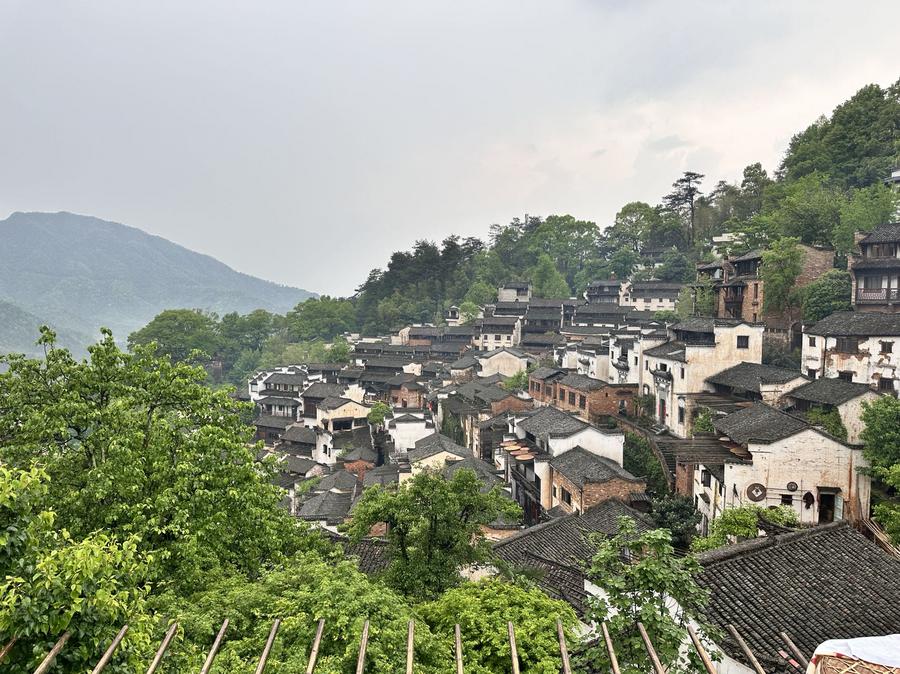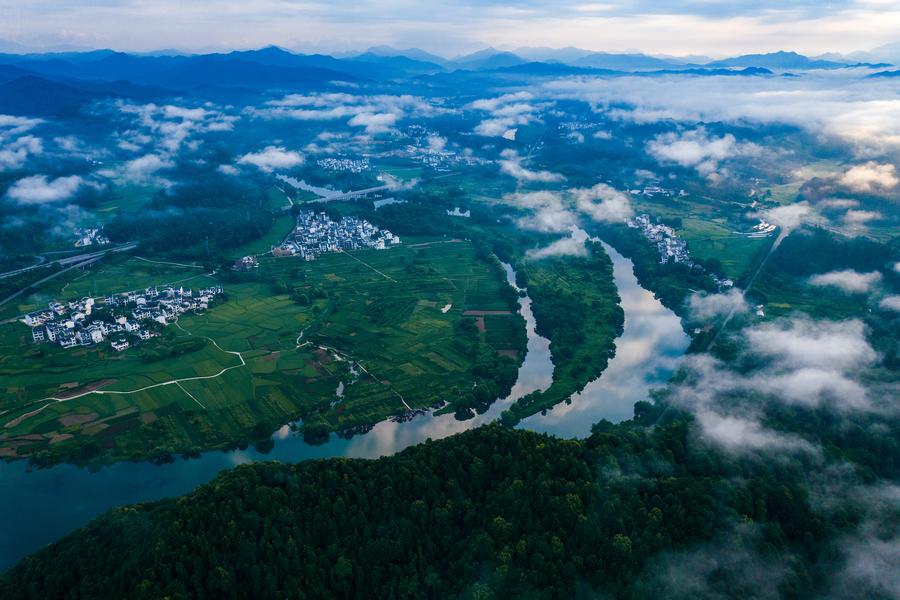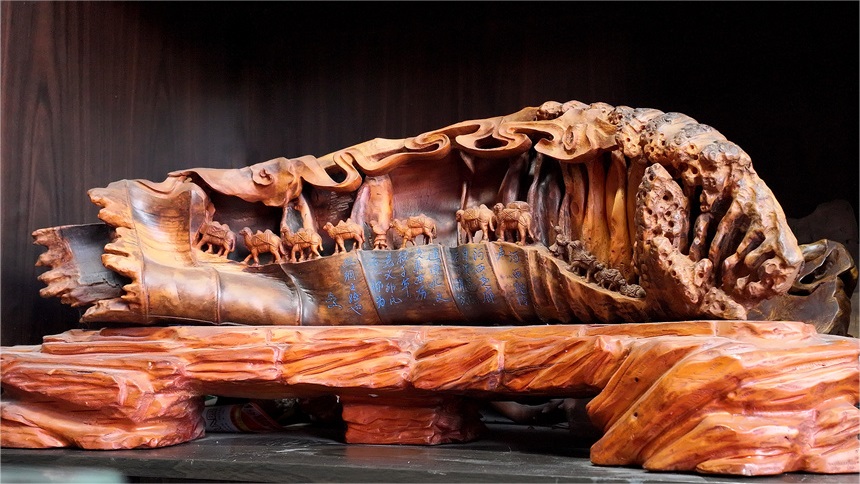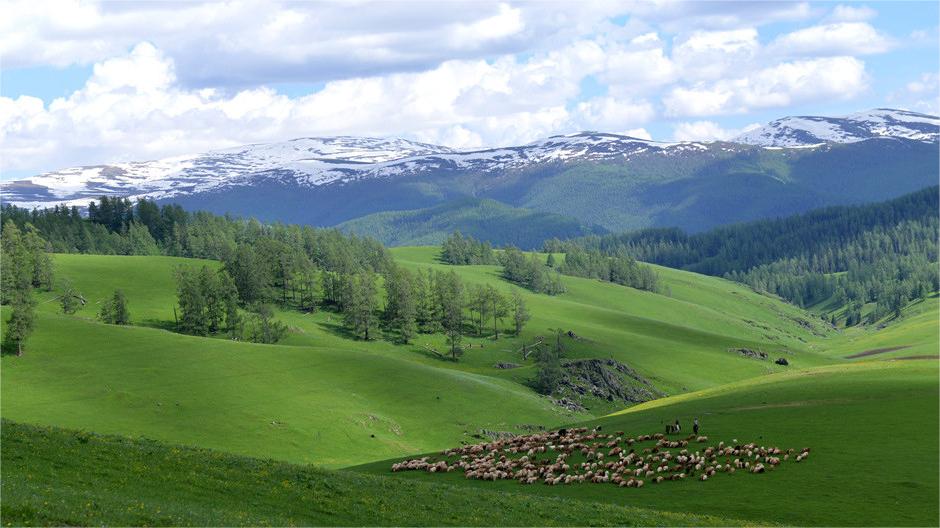Cultural revival helps retain charm of rural China
BEIJING, May 21 (Xinhua) -- Yu Zhiliang, a 66-year-old villager from Wuyuan County in east China's Jiangxi Province, has returned to his hometown after living in the bustling southern metropolis of Shenzhen for over three decades.
Amid local efforts to unlock the tourism potential of the county, Yu rebuilt his ancestral mansion and converted it into a rustic homestay earlier this year, retaining the charm of classic Huizhou-style architecture in the process.
As China endeavors to revitalize its rural areas, many forgotten cultural traditions, particularly in small counties and villages, are being revived, leading to a trend known as "county travel."

This photo taken on April 16, 2024 shows residential houses and rustic homestays in Huangling Village of Wuyuan, east China's Jiangxi Province. (Xinhua/Chen Yushan)
VISIBLE RURAL NOSTALGIA
Yu's cottage showcases authentic Huizhou architectural features, seamlessly blending ancient cultural elements such as a stone archway, figure brick carvings and an indoor patio with modern touches like floor-to-ceiling windows and an elevator.
"In the past, villagers had to go far away to make money. Now, they can earn their bread just at home," Yu said, while enjoying a cup of tea made with leaves picked from a garden in the village. During the first three days of the five-day May Day holiday this year, every homestay in the village was fully booked, according to villagers.
In recent years, the ancient villages and buildings in Wuyuan are undergoing renovation, thanks to private investments and local initiatives. Many historic buildings now serve as exhibition spaces, featuring artworks and cultural and creative products.
The county, known as the "most beautiful countryside" in China, saw a total of 570,000 visits during the five-day holiday, marking an increase of 10.5 percent compared to the previous year, official statistics showed.

An aerial drone photo taken on April 13, 2023 shows the scenery of the Moon Bay in Wuyuan, east China's Jiangxi Province. (Xinhua)
The data testifies to a boom in countryside tourism. On Ctrip, a leading travel platform in China, the number of newly-added scenic spots in county-level areas has reached nearly a thousand this year.
Not only popular destinations like Wuyuan, but also many lesser-known rural areas in China, are benefiting from cultural revitalization.
One such example is Xihe Village in central China's Henan Province, which suffered from a decline in population and has many dilapidated buildings. However, after being included in a local tourism initiative, the centuries-old village, tucked away in the Dabie Mountains, has been turned into a popular tourist attraction with homestay and cafes, while retaining its ancient allure.
REVIVING INTANGIBLE CULTURAL HERITAGE
Huangling Village in Wuyuan is renowned for its breathtaking expanse of rapeseed flowers. This ancient village has earned a coveted spot on the "Best Tourism Villages" list of the United Nations World Tourism Organization. Beyond its spectacular rural landscapes, intangible cultural heritage is becoming another major attraction.
The making of the Jialu oil-paper umbrella is a national-level intangible cultural heritage that boasts a history of over 800 years. These traditional handcrafted umbrellas have now become sought-after fashion items among visitors at this iconic destination.

Cao Wenjuan displays a Jialu oil-paper umbrella at a local umbrella shop in Huangling Village of Wuyuan, east China's Jiangxi Province, April 16, 2024. (Xinhua/Wang Xiaopeng)
Cao Wenjuan, the proprietor of a local umbrella shop, frequently showcases the art of Jialu umbrella-making in her establishment, which is not far from a KFC restaurant. According to Cao, her shop is able to sell over a hundred paper umbrellas per day during the peak season, generating income well beyond what she earned when she worked in the city of Wenzhou in east China's Zhejiang Province.
Currently, several forms of intangible cultural heritage, which also includes local wine brewing, the making of green tea, inkstone, as well as wood carving and stone carving, are evident in major tourist attractions in Wuyuan.
Intangible cultural heritage not only offers visitors a unique selection of souvenirs, but also presents them with a captivating visual spectacle.
For example, during a water sprinkling carnival in a district of Nanning, capital city of south China's Guangxi Zhuang Autonomous Region, the main attraction was the dazzling sparks emitted by the red-hot iron.
Along with the molten iron fireworks show, which holds the distinction of being a national-level intangible cultural heritage, about 500 drones created various shapes in the sky, showcasing a fusion of intangible cultural heritage and modern technology.
EMBRACING LOCAL CUSTOMS
Hosting folk shows in scenic areas allows tourists to experience unique local culture while immersing themselves in a lively festive atmosphere, said Ding Yunjuan, deputy marketing manager of a scenic area in central China's Hunan Province.

Local villagers rehearse dragon dance in Yuanling County, central China's Hunan Province, Jan. 16, 2024. (Xinhua/Liu Fangzhou)
During this year's May Day holiday, the annual "Monihei" Carnival in Cangyuan Wa Autonomous County, located in southwest China's Yunnan Province, captured the attention of tourists from all over the country. In this county, people of the Wa ethnic group traditionally throw and smear muddy water on one another to express their wishes for health and happiness during the carnival.
The carnival, also featuring lively traditional performances such as drum beating and "shaking hair" dancing, demonstrated the tremendous allure of traditional culture.
By offering such special experiences, the county attracted a total of 97,400 visitors during the five-day holiday, generating tourism spending of 78 million yuan (about 11 million U.S. dollars). This represented notable increases of 33.3 percent and 41 percent, respectively, compared to the same period in 2023.

An aerial drone photo taken on Feb. 23, 2024 shows local residents beating drums to welcome guests in Nandan County, south China's Guangxi Zhuang Autonomous Region. (Photo by Liu Zheng/Xinhua)
In a village of the city of Guilin in Guangxi, local farmers diligently tended to the terraced fields as they commemorated the start of plowing season in early May. This traditional practice, which involves plowing, digging, and weeding, has become a captivating sight for both domestic and international tourists.
Dai Bin, head of China Tourism Academy, said that it is essential to recognize such a new tourism trend, which not only expands into lower-tier regions but also highlights the demand for more upgraded experiences beyond just scenery.
Photos
Related Stories
Copyright © 2024 People's Daily Online. All Rights Reserved.









